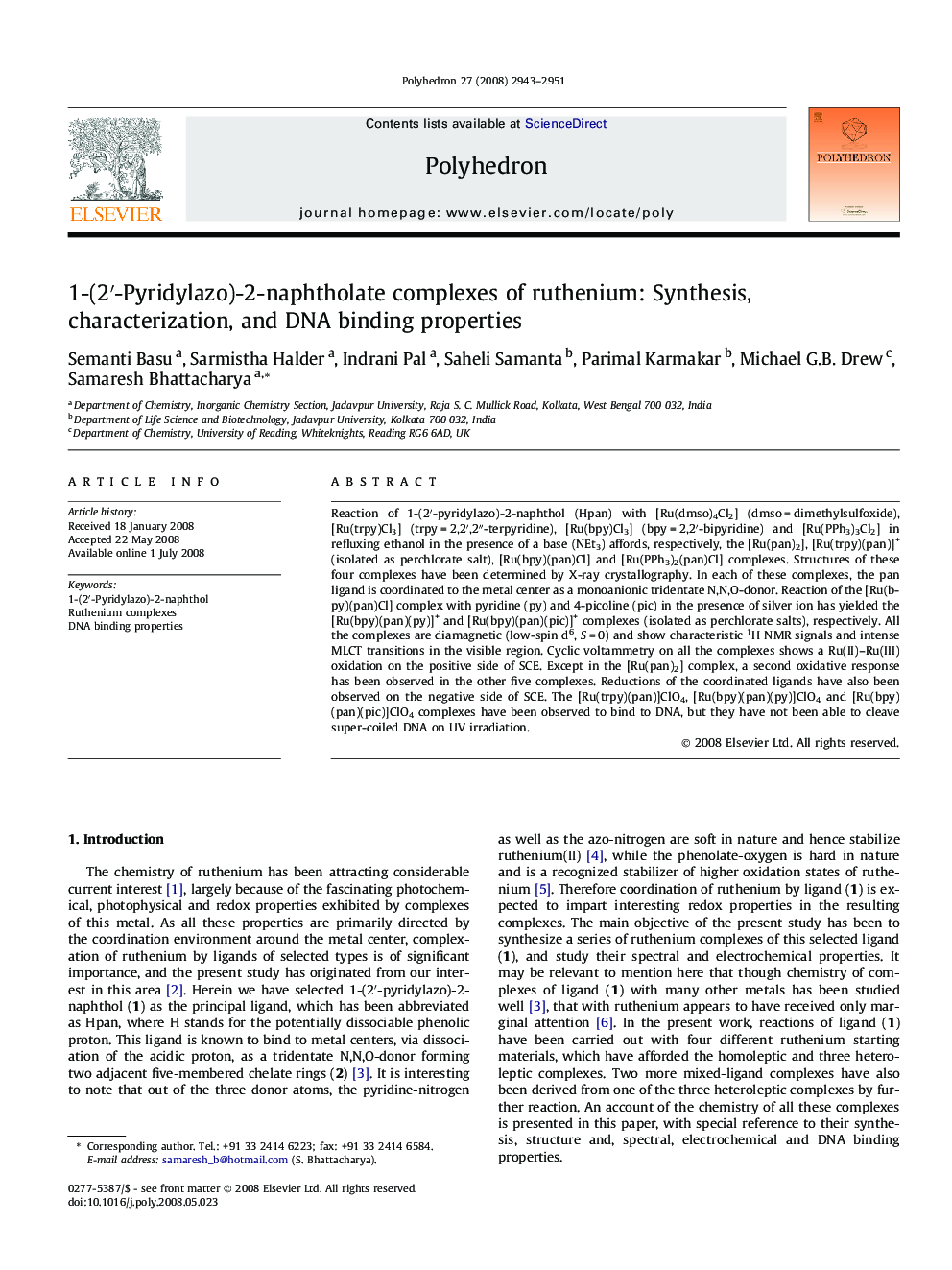| کد مقاله | کد نشریه | سال انتشار | مقاله انگلیسی | نسخه تمام متن |
|---|---|---|---|---|
| 1340361 | 979732 | 2008 | 9 صفحه PDF | دانلود رایگان |

Reaction of 1-(2′-pyridylazo)-2-naphthol (Hpan) with [Ru(dmso)4Cl2] (dmso = dimethylsulfoxide), [Ru(trpy)Cl3] (trpy = 2,2′,2″-terpyridine), [Ru(bpy)Cl3] (bpy = 2,2′-bipyridine) and [Ru(PPh3)3Cl2] in refluxing ethanol in the presence of a base (NEt3) affords, respectively, the [Ru(pan)2], [Ru(trpy)(pan)]+ (isolated as perchlorate salt), [Ru(bpy)(pan)Cl] and [Ru(PPh3)2(pan)Cl] complexes. Structures of these four complexes have been determined by X-ray crystallography. In each of these complexes, the pan ligand is coordinated to the metal center as a monoanionic tridentate N,N,O-donor. Reaction of the [Ru(bpy)(pan)Cl] complex with pyridine (py) and 4-picoline (pic) in the presence of silver ion has yielded the [Ru(bpy)(pan)(py)]+ and [Ru(bpy)(pan)(pic)]+ complexes (isolated as perchlorate salts), respectively. All the complexes are diamagnetic (low-spin d6, S = 0) and show characteristic 1H NMR signals and intense MLCT transitions in the visible region. Cyclic voltammetry on all the complexes shows a Ru(II)–Ru(III) oxidation on the positive side of SCE. Except in the [Ru(pan)2] complex, a second oxidative response has been observed in the other five complexes. Reductions of the coordinated ligands have also been observed on the negative side of SCE. The [Ru(trpy)(pan)]ClO4, [Ru(bpy)(pan)(py)]ClO4 and [Ru(bpy)(pan)(pic)]ClO4 complexes have been observed to bind to DNA, but they have not been able to cleave super-coiled DNA on UV irradiation.
Reaction of 1-(2′-pyridylazo)-2-naphthol (Hpan, 1) with [Ru(dmso)4Cl2], [Ru(trpy)Cl3], [Ru(bpy)Cl3] and [Ru(PPh3)3Cl2] in refluxing ethanol in the presence of a base (NEt3) affords, respectively, the [Ru(pan)2], [Ru(trpy)(pan)]+, [Ru(bpy)(pan)Cl] and [Ru(PPh3)2(pan)Cl] complexes, where the pan ligand is bound to ruthenium as monoanionic N,N,O-donor (2).Figure optionsDownload as PowerPoint slide
Journal: Polyhedron - Volume 27, Issue 13, 10 September 2008, Pages 2943–2951